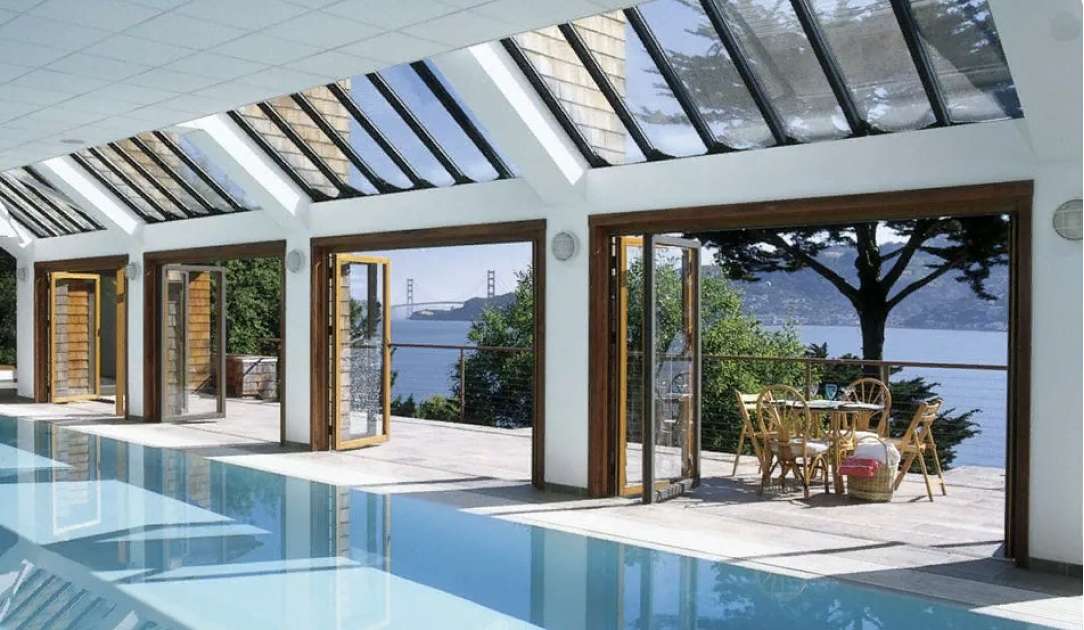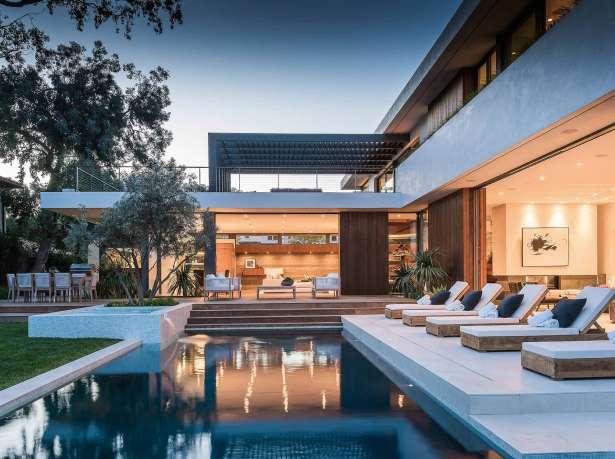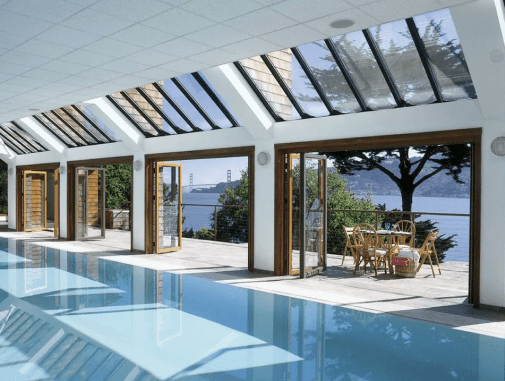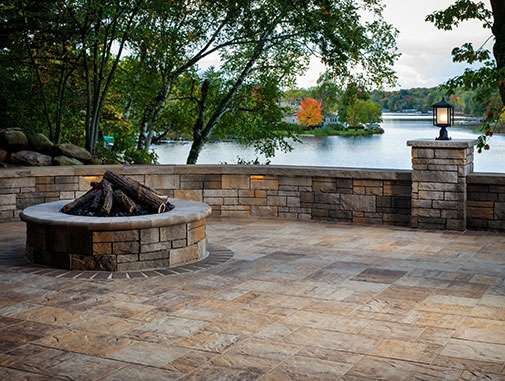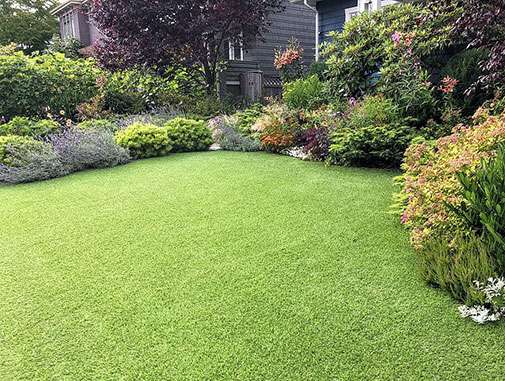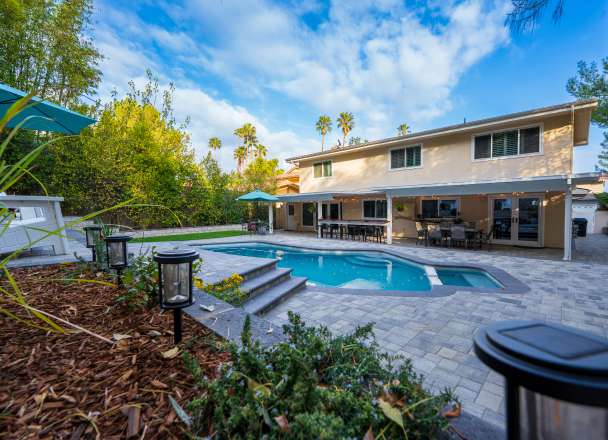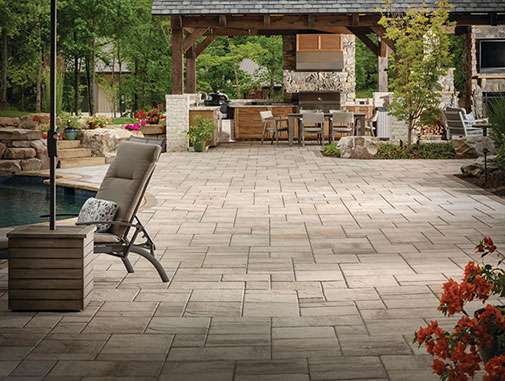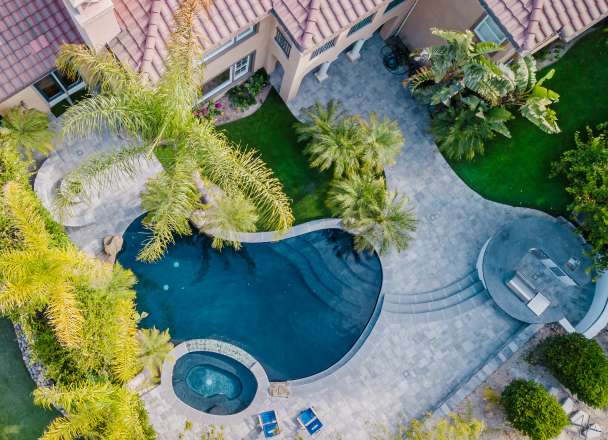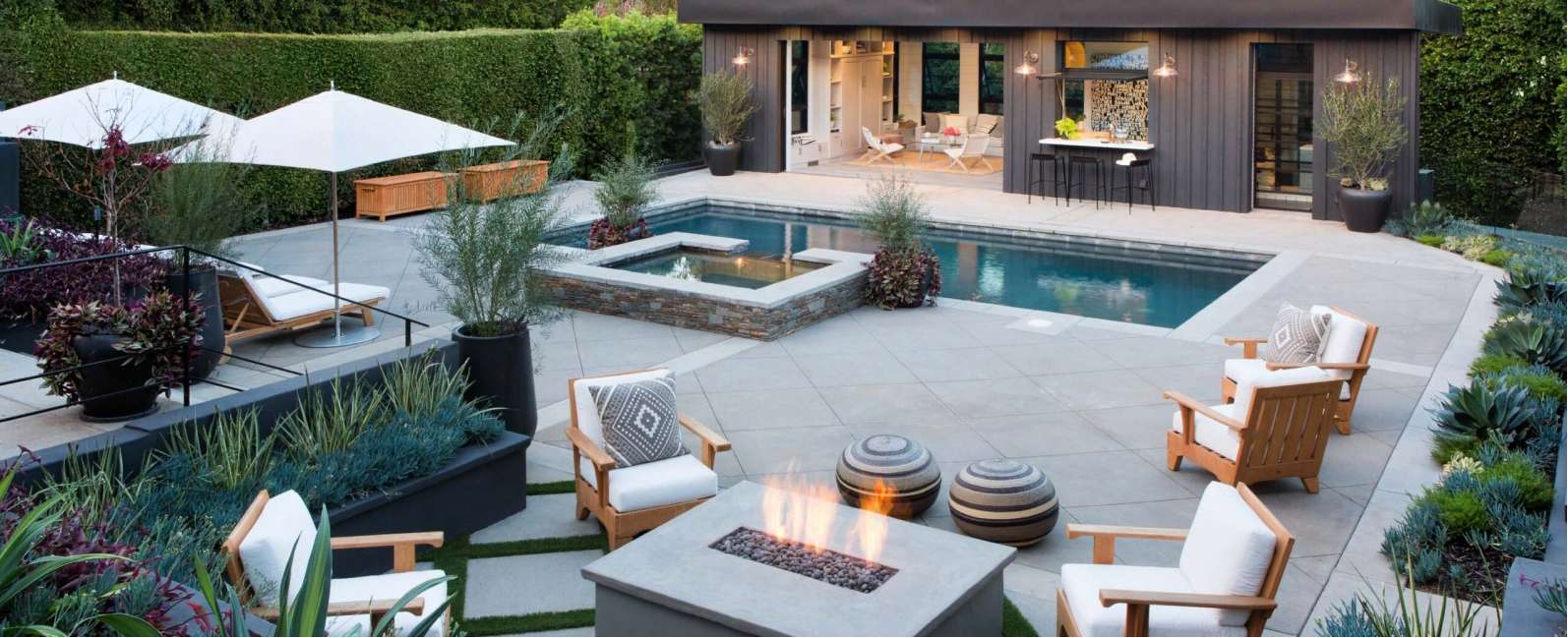Backyard Remodeling: Grass vs Turf
- #Exterior Remodeling
- #Outdoor Living
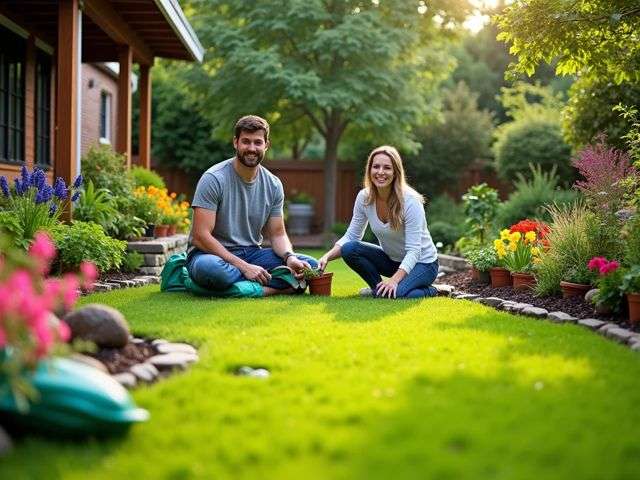
- Smooth Plaster Finish
- Shimmering Pebble Finish
Natural grass offers a softer, safer surface for kids, with fewer injuries reported compared to synthetic turf. However, while turf has lower maintenance needs, it poses risks like extreme heat and potential chemical exposure.
1. Comparing Grass and Turf for Kids’ Safety
Parents often weigh the safety of natural grass versus synthetic turf when creating a play-friendly backyard. Each option has unique safety and comfort implications.
Natural grass offers a soft, cushioned surface, reducing injuries, especially foot and ankle injuries, which occur more frequently on artificial turf. Non-contact injuries happen about 20% more often on turf. Factors like a child’s age, physical condition, and footwear can influence these rates, but the softness of grass generally reduces risk.
Artificial turf is popular for its low maintenance and visual appeal, but safety concerns exist. Synthetic surfaces can become dangerously hot under direct sunlight, posing burn risks. Many turf fields use recycled rubber materials, which may contain harmful chemicals. Lead levels in these materials can be more than twice as high as those in natural substitutes like sand or wood mulch. Concerns about the chemicals in rubber infill and their potential health effects, particularly with prolonged exposure, are significant.
Parents should consider turf composition, as quality varies, especially between American-made products and those from overseas. American-made turf meets stringent safety standards, reducing the risk of harmful chemical exposure. Innovative infill options, such as organic materials or silica sand, offer safer alternatives to traditional crumb rubber.
Promoting the use of natural materials like wood chips instead of rubber for playground surfaces can safeguard children. Regular handwashing after outdoor play is recommended to minimize chemical exposure.
Despite advancements in turf technology, sports medicine experts generally favor natural grass. A blend of both surfaces could offer a promising compromise, accommodating outdoor activity while prioritizing safety for kids. Understanding the risks associated with each option can lead to a more informed choice for a kid-friendly backyard.

2. Maintenance Needs for Grass and Turf Areas
Maintaining a backyard where children can play and families can gather is crucial. The maintenance needs of grass versus turf play a significant role in this decision.
Natural grass requires consistent care to stay vibrant and healthy. Regular mowing, watering, fertilizing, aerating, and weed control are necessary. Annual costs range from $8,133 to $48,960, depending on factors like climate and lawn size. Natural grass also provides environmental benefits, such as improving air quality and cooling the surrounding area.
Synthetic turf, while perceived as low-maintenance, still requires attention. Debris removal, odor prevention (especially if pets are present), regular brushing, infill maintenance, and occasional drainage repairs are essential. Annual maintenance costs for artificial turf range from $13,720 to $39,220.
Initial costs differ—about $2,340 for seeding natural grass versus $9,000 for installing synthetic turf. Over time, natural grass can be more cost-effective since it doesn’t face replacement costs typical of artificial fields, which can amount to around $500,000 every 8-10 years. A case study in Montgomery County, Maryland, showed that the total cost of owning natural grass fields was more favorable compared to synthetic counterparts.
Maintaining natural grass requires substantial investment in both time and money, but the environmental benefits and lower long-term replacement costs often tip the scale in its favor. Families should weigh immediate maintenance needs against long-term implications when crafting a backyard for play and relaxation.
3. Cost Breakdown for Backyard Options
When planning your backyard, the financial aspect is crucial. Comparing the costs of natural grass and artificial turf helps families budget effectively.
Installation Costs: Artificial turf installation costs range from $12 to $20 per square foot, averaging around $6,500 for typical yards. Installing natural grass is more budget-friendly, with seed prices between $0.05 and $0.25 per square foot, but site preparation and planting costs must be considered.
Long-Term Maintenance: Synthetic turf maintenance costs between $250 and $350 per year, totaling about $5,000 to $7,000 over 20 years. Natural grass maintenance costs range from $1,600 to $3,300 a year, resulting in a total of $32,000 to $66,000 over the same period.
Replacement Costs: Artificial turf, with a lifespan of 15-20 years, comes with a substantial replacement cost of around $500,000 every 8-10 years. Natural grass avoids such dramatic replacement expenses.
While natural grass is cheaper to install initially, artificial turf can be more cost-effective over time due to reduced maintenance costs. Families need to weigh their priorities when making this choice.
Ultimately, the decision hinges on budgetary constraints and lifestyle. Assessing your family’s needs will guide the choice between a lush natural lawn that requires maintenance or a high-quality synthetic surface with a higher initial investment.

4. Environmental Considerations of Grass vs Turf
Choosing between natural grass and artificial turf involves significant environmental considerations.
Artificial turf, made from synthetic fibers like polyethylene, polypropylene, or nylon, requires no watering or mowing but has substantial ecological consequences. Its production and installation contribute heavily to carbon emissions, and disposal typically leads to landfill waste and potential microplastic pollution.
Artificial turf infills made from recycled tires can contain toxic chemicals, such as heavy metals and volatile organic compounds (VOCs), posing health risks, especially to children. Additionally, artificial turf can retain heat, leading to dangerously high temperatures and heat-related illnesses.
Natural grass, when maintained organically, offers environmental benefits. It absorbs carbon dioxide and releases oxygen, improving air quality. Organic management eliminates harmful chemicals, resulting in safer spaces for families and pets. Techniques like aeration and organic fertilization improve grass quality and promote biodiversity. Natural lawns provide habitats for insects and birds, supporting a healthier ecosystem.
Natural grass also enhances water quality by reducing runoff and filtering impurities. Its cooling effect diminishes the urban heat island problem. Practices like allowing weeds to flower and not mowing too frequently contribute to healthier neighborhoods by increasing pollination and supporting local wildlife.
Families should weigh the long-term environmental and health impacts when deciding between these options. Integrating natural grass can align with sustainability goals, creating spaces for outdoor play, relaxation, and community engagement. For backyard remodeling, consider the benefits of organic grass management or consult with professionals to create an eco-friendly environment.
For those interested in backyard remodeling, check out the services offered by EHD Builders, where we can help create the perfect outdoor space for your growing family. Explore our offerings like backyard remodeling or pool and spa installations. If you’re considering a more significant transformation, our ADU construction services might be the perfect fit.

FAQ
What are the safety considerations for kids when choosing between grass and turf?
Natural grass provides a softer surface, leading to fewer injuries, especially foot and ankle injuries. Synthetic turf can become hot and pose a burn risk, and its materials may contain harmful chemicals. Parents should consider the turf’s composition and prioritize natural materials for playground surfaces.
How does the maintenance of grass compare to that of turf?
Natural grass requires consistent care, including mowing, watering, and fertilizing, with annual costs ranging from $8,133 to $48,960. Synthetic turf requires less water but still needs care to remove debris and maintain appearance, with annual costs from $13,720 to $39,220. While initial costs might favor natural grass, long-term maintenance often tips the balance in its favor due to lower replacement costs.
What is the cost breakdown for installing grass versus turf?
Artificial turf installation costs about $12 to $20 per square foot, averaging around $6,500 for typical yards. Natural grass installation costs range from $0.05 to $0.25 per square foot but include site preparation expenses. Budgeting for both materials and maintenance is important in making an informed decision.
What are the environmental impacts of grass compared to turf?
Artificial turf has significant environmental drawbacks, including a large carbon footprint from production and disposal challenges leading to landfill waste. Natural grass offers benefits like carbon absorption, improved air quality, and support for biodiversity when maintained organically. Families should weigh these ecological considerations when deciding on backyard solutions.
What health risks are associated with artificial turf?
Many artificial turf surfaces contain infill made from recycled tires, which may have toxic chemicals and heavy metals. Prolonged exposure to these materials can pose health risks, especially to children. The high temperatures artificial turf can reach is another concern, leading to heat-related illnesses among users.
What practices can enhance the environmental and health benefits of natural grass?
Maintaining natural grass organically—using natural fertilizers, aerating regularly, and allowing certain weeds to flower—can enhance its health benefits while contributing positively to the environment. These practices support biodiversity, improve water quality, and help mitigate the urban heat island effect.
